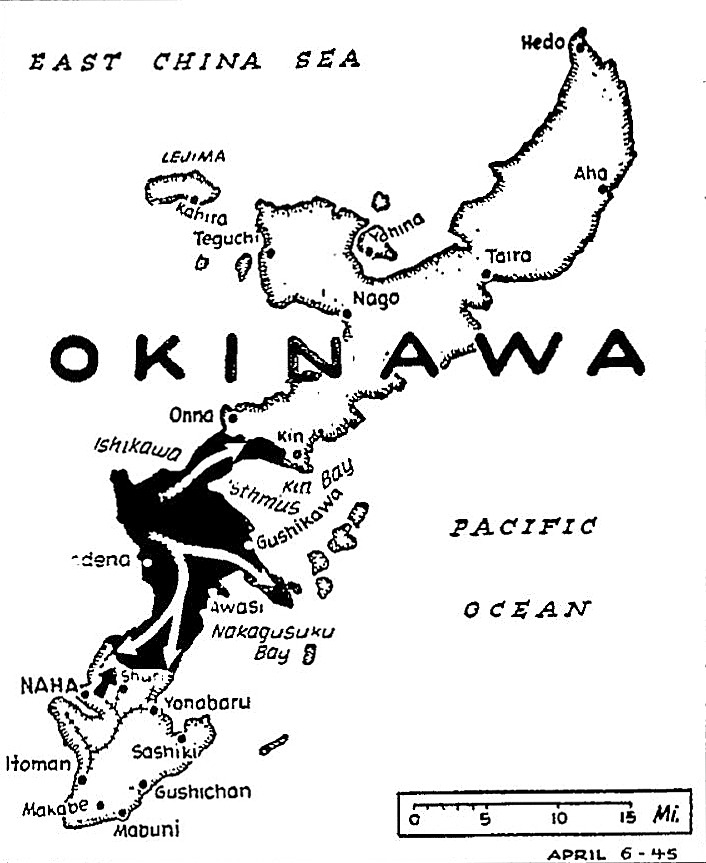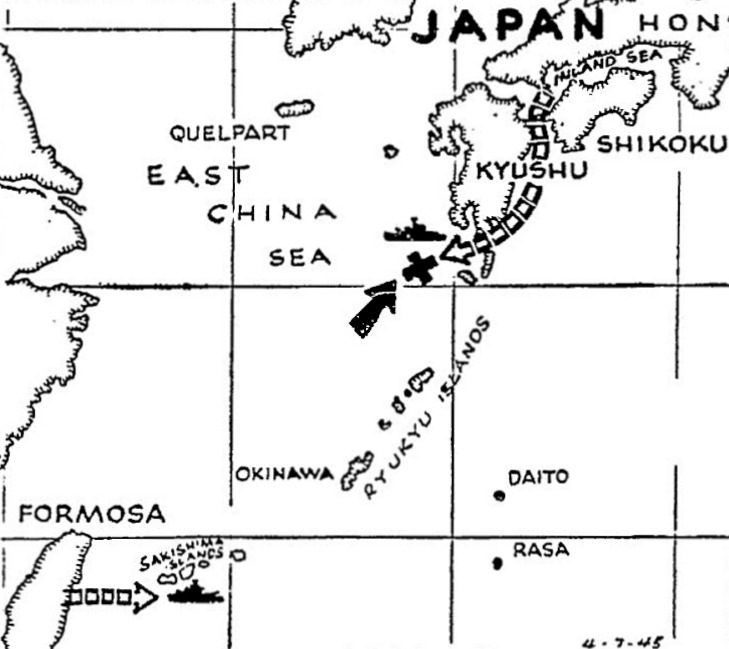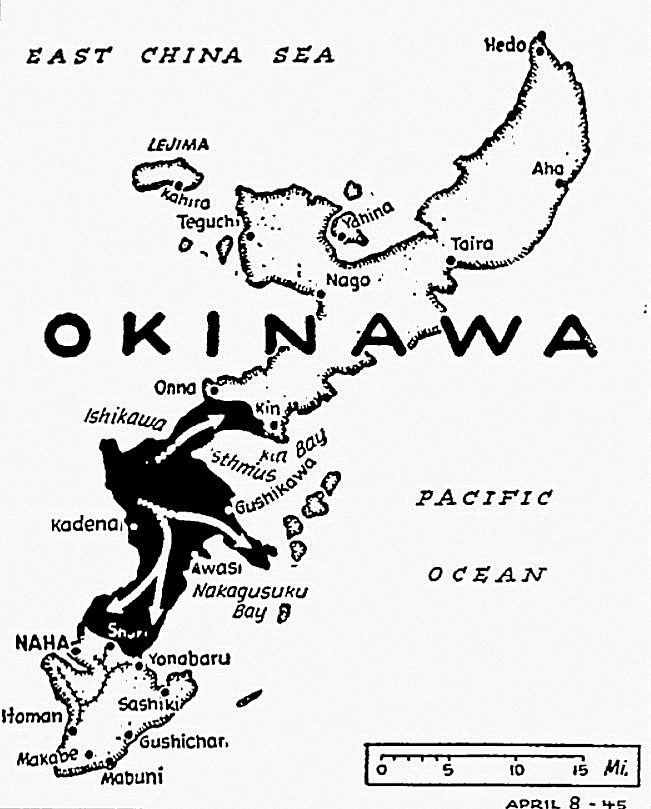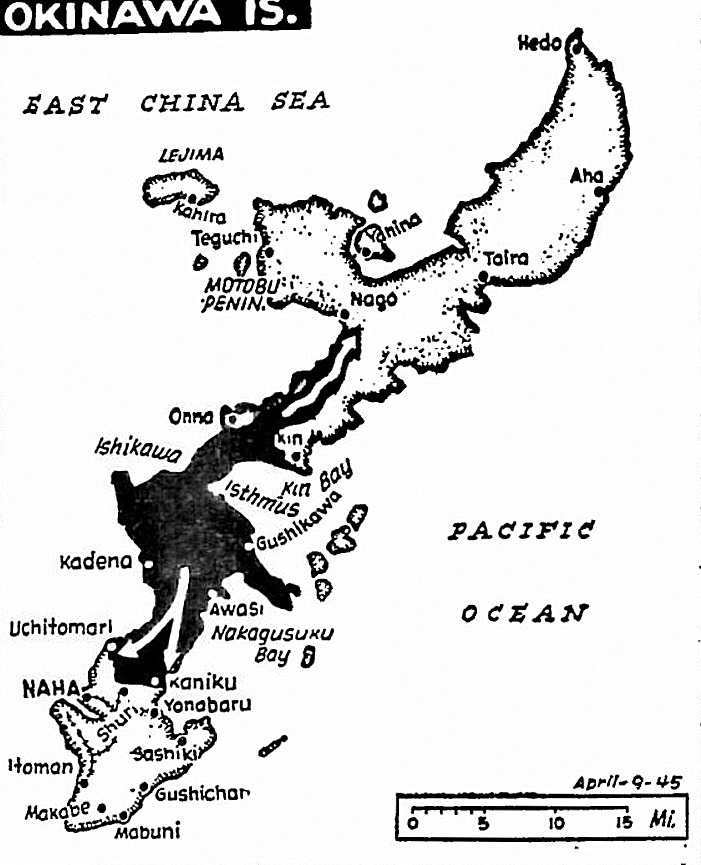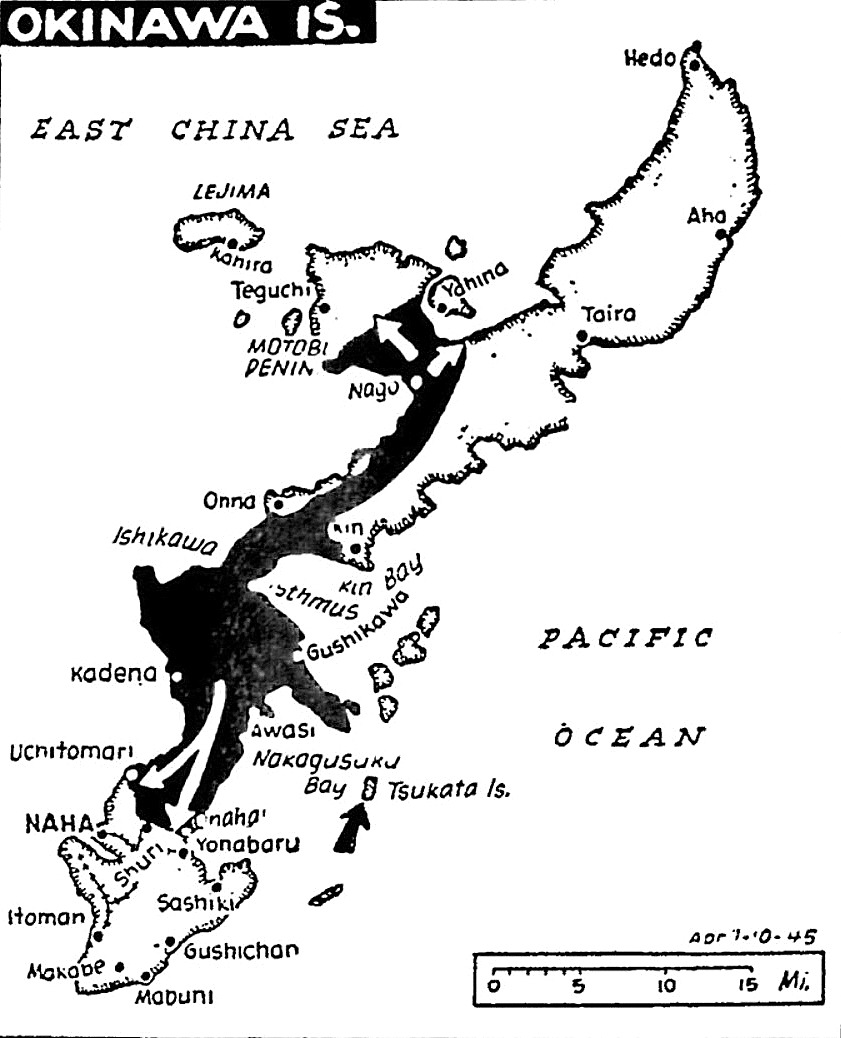The Pittsburgh Press (April 6, 1945)
Attack stalls U.S. invaders on Okinawa
Doughboys drive for port on east coast
Jap counterattack on Okinawa has slowed U.S. troops driving toward the center and west coast of the island toward Naha, the capital. U.S. forces gained in the east coast drive on Yonabaru. To the north, U.S. Marines neared Kin.
GUAM (UP) – Jap defenders of Okinawa opened their biggest counterattack of the campaign today, bringing the American invasion forces to a virtual standstill in the west and central sectors of the island battlefront.
United Press writer James MacLean reported the Jap counterblow in a dispatch from Okinawa. It coincided with numerous signs that the walkover phase of the invasion was finished and bloody fighting lay ahead.
Resistance was reported stiffening all along the Okinawa front. The stalemate in the west and central parts came as U.S. Tenth Army forces stormed the slopes of three hills anchoring the defenses of Naha, smoldering and deserted capital city some four miles to the south.
Gain on east coast
Late reports from Okinawa disclosing the Jap counterattack said that only in the eastern sector were the Americans advancing at anything like the pace of their initial fanout from the west coast beachhead.
Lt. Gen. Simon B. Buckner’s forces were pushing down the east coast toward the town of Tsuwa, three miles north of Yonabaru, the island’s principal east coast port.
The American vanguard was within two miles of Yonabaru airstrip, which the Japs had partly constructed when the invasion began. Front reports said it probably could be made usable in a short time.
On the west coast, the Americans were bogged down about a mile north of Nakama, atop a high ridge running inland. Jap artillery on the ridge was pounding our forces. A curtain of smoke hung over the ridge as U.S. naval guns and land-based artillery teamed with bombers in a concerted assault on it.
Down five Jap planes
Five Jap planes were shot down by anti-aircraft fire this afternoon.
Air scouts reported that Naha showed no signs of civilians or troops. The ruins of Okinawa’s largest city were burning fitfully from a mauling by U.S. air, sea and artillery forces.
Field reports said the Japs appeared to be preparing for a defense in depth. When the hill line before Naha is broken, they are expected to undertake a stand on a secondary line several miles south.
Upwards of 60,000 Japs were believed defending Southern Okinawa.
Marines gain
Marines of the III Amphibious Corps at the northern end of the expanding beachhead drove completely through the Ishikawa Isthmus separating Southern and Central Okinawa in advances up to 5½ miles yesterday.
On the east coast, the Marines were in the vicinity of Kin, 18 miles northeast of Naha, after clearing almost the entire shore of Kin Bay. Resistance continued light in the Marine sector and it appeared the Japanese had written off Central and Northern Okinawa.
A Marine reconnaissance outfit landed on Yabuchi Island just off the tip of Katsuren Peninsula, northern end of Nakagusuku Bay, and found it unoccupied.
U.S. casualties for the first four days of the Okinawa invasion through Wednesday were revealed as 175 dead and 798 wounded.
